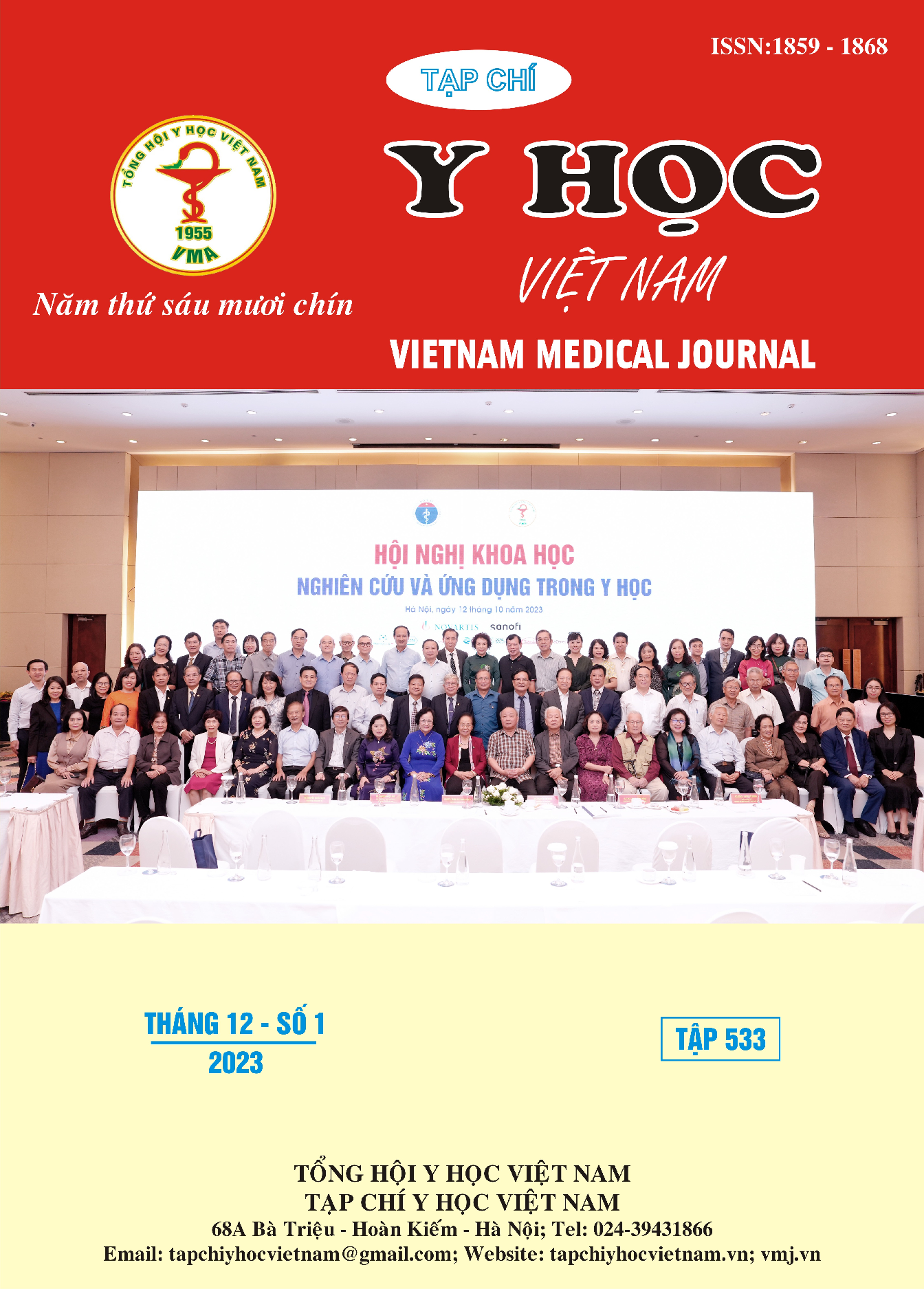CLINICAL EPIDEMIOLOGY OF NEONATES WITH COVID-19 INPATIENT TREATMENT AT NATIONAL CHILDREN HOSPITAL IN 2021-2023
Main Article Content
Abstract
Objective: Description of clinical and subclinical characteristics of neonates with COVID-19 inpatient treatment at the National Children's Hospital in 2021-2023. Subjects and methods: Description of a case series of infants diagnosed with COVID-19 inpatient treatment at the National Children's Hospital in 2021-2023. Results: The 73 neonates with COVID-19 were mainly full term (83.6%); late-onset neonatal COVID-19 infection (90.4%); the average age of diagnosis was 13.0±7.6 days; 69.8% of children infected with COVID-19 had contact with a source of infection. 75.3% of cases co-infected with other diseases. Clinical symptoms are varied, non-specific, the most common are fever (45.2%), poor feeding (52.1%), respiratory symptoms such as runny nose, stuffy nose (65.8%), cough (61.6%), rapid breathing (46.6%). Common subclinical symptoms were increased Ferritin above 600 ng/ml (32.9%) and D-Dimer increased over 1000ng/mL (56.2%). Premature infants < 37 weeks have a 4.63 times higher risk of severe - critical COVID-19 than term infants (95% CI of OR: 1.14-18.83); neonates with birth weight < 2500 grams were 7.13 times more likely to have severe-critical COVID-19 than neonates with birth weight ≥ 2500 grams (95% CI of OR: 1.42-35, 83); neonates with ferritin index > 600 ng/ml had a 2.87 times higher risk of severe and critical COVID-19 than neonates with ferritin index ≤ 600 ng/ml (95% CI of OR:1.05 -7.89). The difference was statistically significant with p<0.05. Conclusion: COVID-19 can be seen in neonates, mostly of late onset. The clinical manifestations are often varied and non-specific, the most common laboratory findings are elevated ferritin and blood D-dimer. Babies born prematurely, with low birth weight or with a ferritin index > 600 ng/ml have a higher risk of severe COVID-19 than full-term infants with normal weight or with a ferritin index ≤ 600 ng/ml.
Article Details
Keywords
COVID-19, neonates, preterm birth
References
2. Akin IM, Kanburoglu MK, Tayman C, et al. Epidemiologic and clinical characteristics of neonates with late-onset COVID-19: 1-year data of Turkish Neonatal Society. Eur J Pediatr. Published online January 21, 2022. doi:10.1007/ s00431-021-04358-8
3. Raschetti R, Vivanti AJ, Vauloup-Fellous C, Loi B, Benachi A, De Luca D. Synthesis and systematic review of reported neonatal SARS-CoV-2 infections. Nat Commun. 2020;11:5164. doi:10.1038/s41467-020-18982-9
4. Nam DH (2022). Nguyên nhân và một số yếu tố liên quan đến tử vong ở trẻ em mắc COVID-19 tại bệnh viện Nhi Trung ương. Hội nghị Nhi khoa toàn quốc lần thứ XXIV, Hà Nội, ngày 24-27/11/2022.
5. Bộ Y Tế (2022). Quyết định 405/QĐ-BYT 2022 Hướng dẫn chẩn đoán điều trị COVID19 ở trẻ em. Published February 22, 2022. https://thuvienphapluat.vn/van-ban/The-thao-Y-te/Quyet-dinh-405-QD-BYT-2022-Huong-dan-chan-doan-dieu-tri-COVID19-o-tre-em-504157.aspx
6. Sankaran D, Nakra N, Cheema R, Blumberg D, Lakshminrusimha S. Perinatal SARS-CoV-2 Infection and Neonatal COVID-19: A 2021 Update. NeoReviews. 2021;22(5):e284-e295. doi:10.1542/ neo.22-5-e284
7. Nguyen PNT, Thuc TT, Hung NT, et al. Risk factors for disease severity and mortality of children with Covid-19: A study at a Vietnamese Children’s hospital. J Infect Chemother. 2022;28(10): 1380-1386. doi:10.1016/ j.jiac. 2022.06.010
8. Nga VTT, Duong TTT, Phong NT, Diu HT, Dung PT. Phân tích một loạt ca bệnh trẻ dưới 2 tháng tuổi mắc COVID-19 tại bệnh viện đa khoa Đức Giang. Tạp chí Y học Việt Nam. 2022;514(5):138-145.


